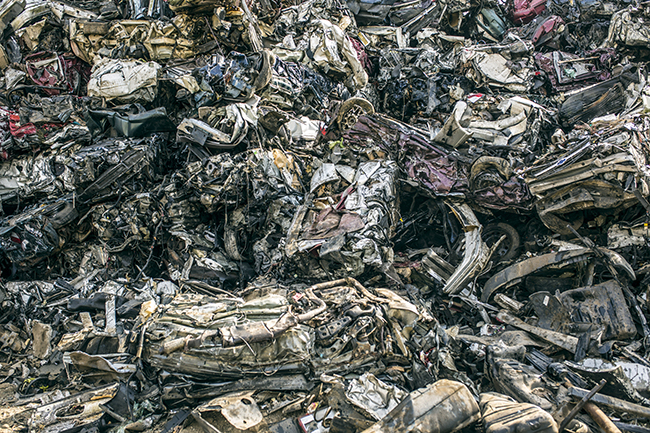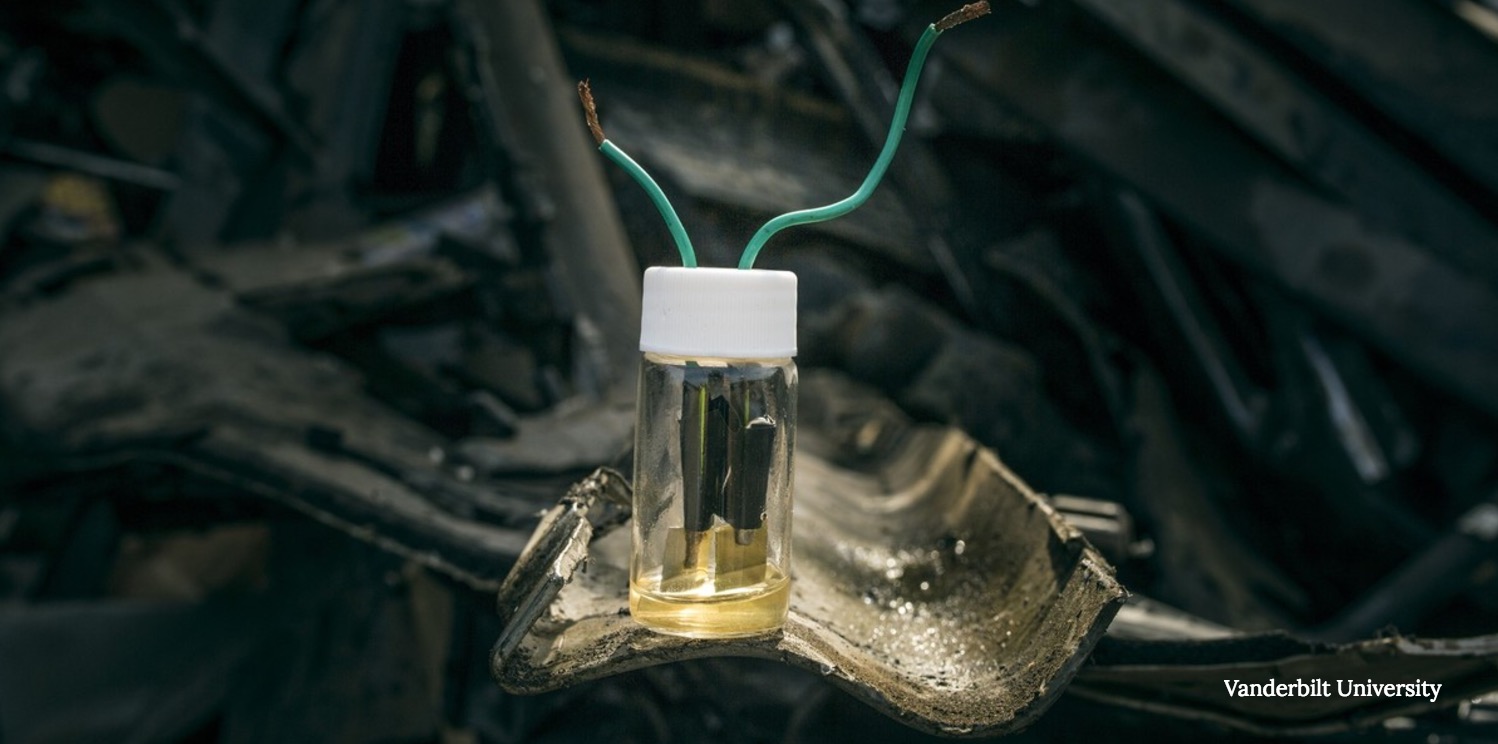Junkyard Metal Turned into a DIY Super Battery

"The battery companies won't like this," Cary Pint told me.
Pint, an assistant professor in the department of mechanical engineering at Vanderbilt University, was talking about a high-performance, grid-scale battery he and his students made from metal scrap and common household chemicals, which they documented in a published article. Not only is the battery powerful and easy-to-build, it represents a new kind of approach to innovation because it bypasses industry and manufacturing altogether and goes directly to the people.
"We can do the hard work, we can do the development and then instead of communicating it to industry, we can communicate it to the public," Pint said.
These days, if you want to learn how to build a gizmo or repair a machine, you can search for instructions on Youtube. The proliferation of how-to videos along with the rise of the maker culture, where tinkerers and hackers merge to create new devices, has lead to innovations in just about every field. Except batteries. Pint and his students aim to change that.
They have plans to create an online video to show do-it-yourselfers how to build the battery and then solicit feedback to make improvements. Think of it as an open source approach to energy storage.
"The average person could work with us to develop this," Pint said.
The team got their inspiration from an ancient technology called the Baghdad Battery, which dates to the first century BC. It consisted of a terracotta pot, a copper sheet and an iron rod along with some trace chemicals that could have been an electrolyte.
Get the world’s most fascinating discoveries delivered straight to your inbox.
Components for Pint's battery sound similar. It begins with a piece of steel, a piece of brass and a jar. The team soaked the metal pieces in a jar with a solution of water and salt or a solution of water and antifreeze. Next, they applied a voltage to induce a known process called anodization, which restructures the nanoscopic composition of a metal. That exposes the metal's interior surface and makes it more receptive to storing and releasing energy.
The next step was to place a physical barrier between the two pieces of metal. Lastly, they submerged it in an electrolyte solution made from water and potassium hydroxide, a soap easily purchased online. When connected by wires to a device that generated a current, such as a solar panel, their contraption worked just like a car battery.
RELATED: Can Your Entire House Run On Batteries?
For their proof-of-concept battery, which is no bigger than a pill bottle, the team found that it could withstand the equivalent of 13 years of daily charging and discharging while retaining 90 percent of its capacity.
After they make the video and solicit feedback, they have plans to refine the design, scale it up and then share it with a wider audience. Anyone could use the DIY battery to store energy from their solar panels and truly disconnect from the power grid, said Pint.
"I have this vision of building an open-source tiny house with a solar panel on top of the roof and a little scrap metal battery out back, and plugging that down somewhere in the mountains," Pint said. "That would be a perfect life."
Pint invites anyone with a similar dream to contact him here.
Original article on Seeker.




